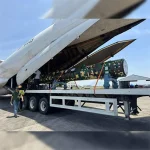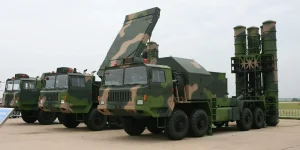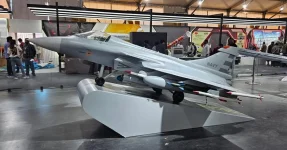- Views: 5K
- Replies: 28
Officials from the Indian Air Force (IAF) have firmly denied recent media reports originating from Japan which suggested India was interested in participating in the Global Combat Air Programme (GCAP). GCAP is a major international project involving the United Kingdom, Japan, and Italy aimed at developing a sixth-generation fighter aircraft.
Clarifying India's position, an IAF official stated that no official discussions have occurred with Japan regarding GCAP, nor has India formally requested to join the initiative. This statement counters speculation about India's potential involvement in the advanced fighter jet project. The GCAP consortium is known to be seeking additional partners to help manage the substantial estimated development costs of $32.5 billion.
However, the IAF stressed its unwavering commitment remains with its own domestic Advanced Medium Combat Aircraft (AMCA) program, which aims to deliver a 5.5-generation stealth fighter for induction around 2035.
Reports in Japanese media earlier this week had asserted India's interest in the GCAP project. Launched in 2022, GCAP brings together major defence contractors like Japan’s Mitsubishi Heavy Industries, Italy’s Leonardo, and Britain’s BAE Systems.
Their goal is to produce a next-generation stealth aircraft by 2035, equipped with cutting-edge features like advanced stealth capabilities, directed-energy weapons, and seamless integration with unmanned aerial systems.
The reports implied that India's participation could alleviate the financial strain and utilize India's expanding aerospace capabilities, a view reportedly shared by the UK and Italy who have previously invited India.
However, IAF officials have labelled these reports as speculative. "No such talks have happened, nor has India sought Japan’s permission to join the program," an official confirmed. They acknowledged that GCAP is actively looking for more partners due to the high project costs, but reiterated that India has not entered formal participation talks.
This stance aligns strongly with India's national policy of 'Atmanirbhar Bharat', emphasizing self-reliance in defence production, clearly demonstrated by the focus on the AMCA project being developed by the Defence Research and Development Organisation (DRDO) and the Aeronautical Development Agency (ADA).
While refuting current interest in formal talks, the IAF official did acknowledge that an informal briefing on the GCAP project was provided by officials from the British Ministry of Defence (MoD) a few years prior, around 2022. This occurred when the UK first extended an invitation for India to join the Tempest Project, which subsequently evolved into GCAP. The briefing aimed to outline the program's goals and potential advantages for India.
Both the UK and Italy have since expressed continued interest in India joining the program, with Japan reportedly agreeable to help share the financial and technological load.
During the informal briefing, potential benefits such as access to the same advanced engine technology – possibly led by Rolls-Royce – for both the GCAP aircraft and India's AMCA were discussed. This could potentially streamline development processes. Rolls-Royce, along with France's Safran, has also proposed developing a powerful 110-130 kN engine for the AMCA, offering full intellectual property rights to India.
Nevertheless, the IAF official stressed that this briefing did not result in any agreements, and India's primary focus remains solidly on developing the AMCA.
The AMCA represents India's premier indigenous fighter program, designed as a 5.5-generation aircraft incorporating technologies that bridge the gap between current 5th-generation fighters (like the Rafale or F-35) and future 6th-generation concepts.
Key features planned for the AMCA include high levels of stealth, the ability to sustain supersonic speeds without afterburners (supercruise), advanced artificial intelligence-integrated avionics, and sophisticated sensors.
The first flight is targeted for 2028, with squadron induction planned around 2035. The IAF intends to acquire 126 AMCA jets by 2040. Initial Mk1 versions will use the General Electric F414 engine, while the later Mk2 variant is planned to feature a more powerful 110-130 kN thrust engine, co-developed with an international partner – a contract currently competed for by Rolls-Royce, Safran, and GE.
Despite invitations to join other international next-generation fighter programs, such as GCAP and the Future Combat Air System (FCAS) being developed by France, Germany, and Spain, India has consistently prioritised its domestic AMCA project.
The IAF official emphasized that the successful development and induction of the AMCA is seen as a crucial stepping stone, building the technological foundation necessary for India to eventually develop its own indigenous 6th-generation fighter, potentially starting in the 2040s for induction around 2050. This long-term approach reflects India's strategic goal of achieving technological independence in critical defence areas.





